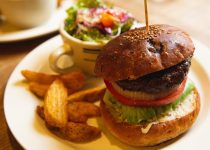Why Is My Char Broil Grill Not Getting Hot Enough
Are you frustrated because your Char Broil grill isn’t heating up like it should? Don’t worry, we’ve got you covered.
In this article, we’ll explore the possible reasons why your grill may not be getting hot enough. From gas supply issues to clogged burner tubes, we’ll break down all the potential culprits.
By the end, you’ll have a clear understanding of what could be causing the problem and how to fix it.
Let’s get started!
Table of Contents
Possible Gas Supply Issues
It’s possible that the gas supply is causing your Char-Broil grill to not get hot enough. One common issue is low gas pressure. If the gas pressure is too low, it can affect the grill’s ability to reach high temperatures. The gas pressure can be affected by a few factors, such as the gas tank being almost empty or the regulator not functioning properly.
To check the gas pressure, start by ensuring that the gas tank is not nearly empty. If it is, replace or refill the tank. Next, examine the regulator. The regulator is responsible for controlling the gas flow and maintaining the correct pressure. Make sure it is securely attached to the gas tank and the grill. If there are any visible signs of damage or wear, such as cracks or leaks, replace the regulator.
If the gas pressure and regulator seem to be in order, there could be other issues causing the problem. These could include a clogged burner or a faulty igniter. It’s also important to ensure that the grill is properly assembled and that all connections are tight and secure.
Clogged Burner Tubes
The clogged burner tubes may be the reason your grill isn’t heating up properly. Over time, grease and debris can accumulate in the burner tubes, obstructing the flow of gas and affecting the performance of your grill. Regular maintenance, such as cleaning the burner tubes, can help prevent this issue and ensure your grill is working at its best.
To clean the burner tubes, follow these simple steps:
- Turn off the gas supply and disconnect the grill from the propane tank.
- Remove the grates and heat deflectors to access the burner tubes.
- Use a wire brush or a pipe cleaner to clean the inside of the tubes, removing any built-up residue.
- Check for any signs of damage, such as rusted or corroded tubes, and replace them if necessary.
- Reassemble the grill, making sure all the components are securely in place.
Regular maintenance, including cleaning the burner tubes, is essential for optimal grill performance. By keeping these tubes clean and free from obstructions, you can ensure that your grill heats up properly and cooks your food evenly.
| Benefits of Cleaning Burner Tubes |
| Prevents gas flow obstruction |
| Extends the lifespan of your grill |
| Improves heat distribution |
| Reduces flare-ups |
| Enhances cooking performance |
Malfunctioning Ignition System
If you’re experiencing insufficient heat output from your grill, one possible cause could be a malfunctioning ignition system.
To troubleshoot this issue, start by checking if the spark igniter is producing a spark when you turn on the grill.
Additionally, make sure the ignition electrode is properly aligned and not covered in debris.
Ignition System Troubleshooting
I’ll check the ignition system to see if that’s causing the issue with your Char Broil grill not getting hot enough. Here are some steps you can take to troubleshoot the ignition system and ensure it’s working properly:
-
Check the battery: Make sure the battery in the ignition system is not dead. Replace it if necessary.
-
Clean the electrodes: Over time, the electrodes can become dirty or corroded, preventing proper ignition. Clean them with a wire brush or sandpaper.
-
Inspect the wiring: Check for any loose or damaged wires that may be affecting the ignition. Replace or repair as needed.
-
Test the ignition module: If all else fails, the ignition module may be faulty. Use a multimeter to test it for continuity.
In addition to checking the ignition system, it’s also important to troubleshoot the gas supply. Ensure the propane tank is not empty and that the gas line is properly connected and not blocked.
Insufficient Heat Output
To troubleshoot the insufficient heat output, start by checking the propane tank and ensuring it is not empty. If the tank is low or empty, replace it with a full one.
Next, take a look at the thermal conductivity of your grill. Over time, the heat distribution plates and burners can become clogged with dirt and grease, affecting their ability to transfer heat properly. Clean these parts thoroughly with a wire brush or grill cleaner to improve thermal conductivity.
Additionally, make sure to regularly maintain your grill by cleaning the grates and removing any debris. This will ensure proper airflow and heat distribution.
Damaged Heat Plates
If your char broil grill is not getting hot enough, there are a few key points to consider.
First, check for rusty heat plates, as they can reduce the heat output.
Second, blocked burner holes can restrict the flow of gas and hinder proper heating.
Lastly, a loose heat shield may cause heat to escape, resulting in insufficient temperature.
Rusty Heat Plates
Check if your rusty heat plates are obstructing the proper flow of heat on your Char Broil grill. The condition of your heat plates can greatly affect the performance of your grill. Here are some things to consider:
-
Cleaning methods: Regularly clean your heat plates to prevent rust buildup. Use a wire brush or grill cleaner to remove any debris or rust.
-
Heat plate replacement: If your heat plates are severely rusted or damaged, it may be time to replace them. Look for replacement heat plates that are specifically designed for your Char Broil grill.
-
Proper installation: Ensure that your heat plates are properly installed, with the holes facing downwards. This will allow for proper heat distribution.
-
Regular maintenance: Keep an eye on the condition of your heat plates and perform regular maintenance to prolong their lifespan.
-
Protective measures: Consider using a grill cover when your grill is not in use to protect the heat plates from rusting.
Blocked Burner Holes
Blocked burner holes can significantly impact the performance of your grill. When the burner holes become blocked, it restricts the flow of gas and prevents the flames from reaching their full potential. This can lead to your grill not getting hot enough, resulting in undercooked food and a frustrating grilling experience.
To prevent this issue, regular cleaning and maintenance are essential. Start by turning off the gas supply and removing the grates and burner covers. Use a wire brush to clean the burner holes, removing any debris or buildup. Be thorough and ensure all the holes are clear.
Additionally, inspect the burner tubes for any obstructions and clean them if necessary. By following these cleaning techniques and maintenance tips, you can keep your burner holes clear and enjoy a properly heated grill every time you cook.
Loose Heat Shield
The loose heat shield can affect the performance of your grill by allowing excessive heat to escape, resulting in uneven cooking temperatures. To ensure your grill is functioning properly, it’s important to regularly maintain and inspect the heat shield.
Here are three simple steps for heat shield maintenance:
-
Check for any signs of damage or corrosion on the heat shield. If you notice any cracks or holes, it may be time for a replacement.
-
Tighten any loose screws or bolts that secure the heat shield in place. A loose heat shield can easily move around and compromise the efficiency of your grill.
-
Clean the heat shield regularly to remove any built-up grease or debris. A dirty heat shield can hinder heat distribution and compromise the overall performance of your grill.
Low Fuel Level or Empty Propane Tank
Make sure you’ve got enough fuel in your propane tank for your char broil grill to heat up properly. If your grill is not getting hot enough, one of the possible causes could be a low fuel level or an empty propane tank. Without enough fuel, your grill will struggle to generate the necessary heat to cook your food effectively.
To ensure that you have enough fuel, check the gauge on your propane tank. If it’s indicating a low level or empty, it’s time to refill or replace the tank. It’s also a good idea to have a spare propane tank on hand so that you never run out of fuel in the middle of a cookout.
In order to maintain a steady flow of gas from the propane tank to your grill, it’s important to have a properly functioning gas regulator and gas valve. A gas regulator malfunction or a faulty gas valve can restrict the flow of gas, resulting in a weak flame and insufficient heat. If you suspect that either of these components is causing the issue, it’s best to consult a professional for inspection and repair.
Incorrect Grill Assembly
To properly assemble your grill, follow the instructions provided in the user manual. Incorrect grill assembly can lead to various issues, including poor heat distribution and insufficient heating. It’s essential to ensure that all parts are securely attached and in the correct positions.
Here are some key points to keep in mind for proper grill assembly:
- Check for loose screws or missing parts during assembly to prevent any potential hazards.
- Make sure the gas lines are properly connected and tightened to avoid gas leaks that can affect the heat output.
- Position the burners correctly to ensure even heat distribution across the cooking surface.
Proper grill assembly is vital for optimal grill performance and safety. Neglecting this step can result in a frustrating grilling experience and potential damage to your grill.
Regular grill maintenance, such as cleaning the grates and burners, will also contribute to proper grill usage. By following the manufacturer’s instructions and conducting routine maintenance, you can enjoy a well-functioning grill that consistently provides the heat you need for delicious outdoor cooking.
Poor Ventilation or Air Flow
Ensure proper ventilation and air flow by keeping the grill positioned at least 10 feet away from any structures or flammable materials. This is essential for maintaining a safe grilling environment and preventing any potential accidents or fire hazards.
Proper ventilation allows for the efficient circulation of air, which is crucial for achieving optimal grill performance.
Proper grill maintenance is of utmost importance to ensure that your grill works effectively and efficiently. Regular cleaning and inspection of the grill’s components, such as the burners, grates, and vents, can help prevent any blockages or buildup that may hinder air flow and ventilation. Additionally, checking for any gas leaks or faulty connections is crucial for the safety of both you and your grill.
The impact of outdoor temperature on grill performance should also be taken into consideration. In colder weather, it may take longer for your grill to reach the desired temperature, as the lower temperatures can affect the efficiency of the burners. Conversely, in extremely hot weather, the grill may struggle to maintain a consistent temperature due to excessive heat and lack of proper ventilation.
Conclusion
So, if your Char-Broil grill is not getting hot enough, there are several possible reasons you should consider.
-
It could be due to gas supply issues, such as a low fuel level or an empty propane tank.
-
Another possibility is clogged burner tubes or a malfunctioning ignition system.
-
Damaged heat plates or incorrect grill assembly can also affect the heat output.
-
Lastly, poor ventilation or air flow could be hindering the grilling process.
By addressing these potential issues, you can ensure your grill reaches the desired temperature for a perfect cookout experience.




